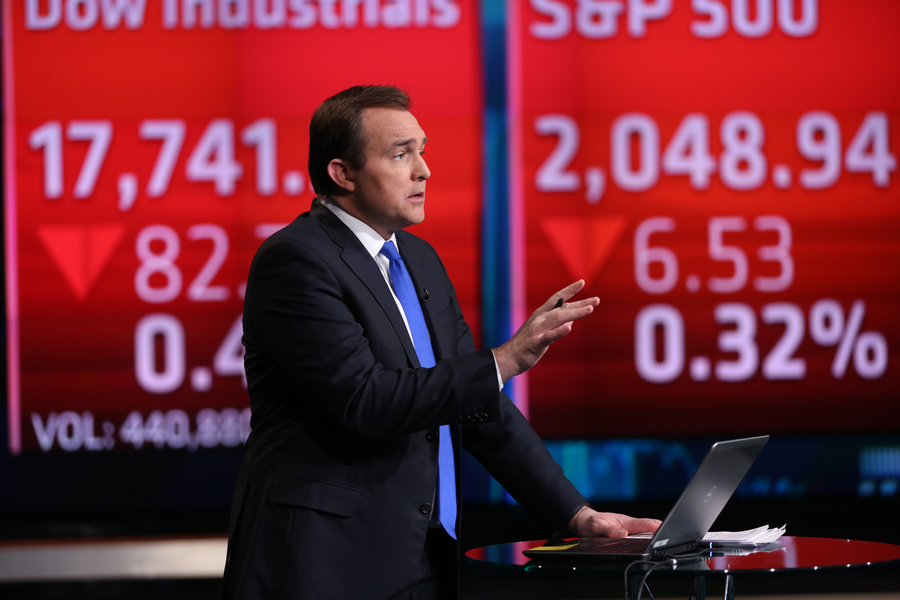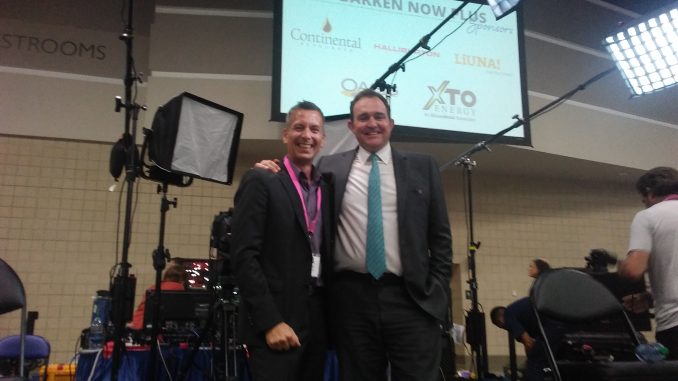

April is Financial Literacy Awareness Month and The Crude Life has one of the best in the business CNBC’s Brian Sullivan. This interview is from when $100 oil was new and prices were out of control. Sullivan reacts to his trip to the Bakken oil fields in 2016.
Jason Spiess: Just so we can get some context for the interview. Tell me about your first trip to the Bakken oil fields in North Dakota.
Brian Sullivan: First trip to North Dakota was 2013 when things were really heating up. We wanted to go see how Williston and the Bakken region was dealing with the boom. I’ve been through this business enough to have seen some booms, like the Internet boom. Sadly I’ve been doing this now for over 20 years in financial journalism.
I wanted to see how they dealt with the boom and met some key players and spoke to some locals. It was a classic growth story of ‘we can find enough of this’ or ‘find enough of that’. I’ll never forget one of the cool anecdotes from that Bakken trip, I stayed at this hotel, which you’ll have to forgive me because I forgot the name, but now it is a Ramada. I think it was sold (after that Bakken trip). Anyway, it was on a dirt road because the hotel developer wanted to put the thing up but the town was slower than the developers because there was so much growth happening. So I have this rental car on sort of driving on this dirt driveway. (laughs)
This was a brand new hotel and it was nice, but it was also like $400-a-night. I was shocked by not only the level of growth, but the level of cost. How much everything cost. It was just shocking. We were up there for about 2 days, then we came back to the studio and returned to the oil fields in December of 2014.
Brian Sullivan is anchor of CNBC’s “Last Call” (M-F, 7PM-8PM ET), which broadcasts from CNBC Global Headquarters in Englewood Cliffs, N.J. He is also Senior National Correspondent for the network, covering some of the nation’s biggest stories.
Most recently, Sullivan was anchor of CNBC’s “Worldwide Exchange” (M-F, 5AM-6AM ET). Prior to that, he was co-anchor of CNBC’s “Power Lunch”(M-F, 1PM-3PM ET).
In his 25 years of financial journalism and television experience, Sullivan has reported from five continents. He has been twice nominated for the prestigious Loeb Award; one for being recognized as among the first financial journalists to highlight the risks of the housing bubble in 2007, and the other for the 2013 CNBC documentary “America’s Gun: The Rise of the AR-15.”
Prior to CNBC, Sullivan served as an anchor at Fox Business News as well as a producer, reporter and anchor for Bloomberg Television.
Sullivan has a B.A. in political science from Virginia Tech, where he serves on the Alumni Board, as well as a law degree from Brooklyn Law School. In his free time, he is an avid race car driver with two SCCA divisional championships.
Brian Sullivan
Brian Sullivan B, Ria N S U L L I VA N I am the co hosts of the C NBC program, Power Lunch from 1 to 3 PM eastern time Monday through Friday. I am, I have just returned from my third trip to the bake up in Williston, North Dakota, Tioga, Ray, North Dakota to dig further into the oil and energy story.
Jason Spiess
So, uh let’s talk about your first trip out there if you wouldn’t mind. I mean, if you want to start by with the most recent information, that’s fine. But uh just for a little context, I guess I was kind of wondering about your first trip out to North Dakota. 1st
Brian Sullivan
Trip to North Dakota was October of 2013 when things are really heating up and we wanted to go see, how how Williston sort of the Bakken region was dealing with the boom. Uh I’ve been through this business enough to have seen some booms like the internet boom. I’ve been doing this now for Sadly over, I guess this is my 20th year um in financial journalism.
And so when they dealt with the boom and we met some key players and spoke with some locals and it was just a classic growth story of things. Can’t, you know, we can’t find enough of this. We can’t find enough of that. I’ll never forget. One of the cool anecdotes is that I stayed in this hotel and you forgive me. I can’t remember the name of it. It’s now a Roma uh I think it was sold, it was on like a dirt road because the hotel developer, you know, wanted to put the thing up.
But, you know, the town is slower to put the roads down because there’s so much growth. But, you know, you get this rental car, you’re sort of driving on this uh this dirt driveway, You know, to a brand new hotel and the hotel was, was nice, but it was also, I think $400 a night, you know, and I was just sort of, I was shocked by, by just not only the level of growth but just the level of cost, I mean, how
much everything costs. Um It was just shocking to me. So we were up there for, for, you know, two days or whatever we were and came back and then we returned in December of 2014 …
Jason Spiess
And 2014. That was two years ago. So oil prices were probably around that $60 range if my memory serves me right, the bottom hadn’t fallen out at that point yet. But the, but the beginning had start. Uh you started hearing oil companies talking about changing their, their operations in 2015. I can recall Lynn Helms uh director for the North Dakota uh Mineral Resources.
Start to give that kind of ominous warning during the uh annual meetings in October of 2013, I wanna say, or 14. Um when you went back out there, December 2014, what was the activity like then? Was it still dirt roads at $400 a night? Ramada or had it changed a little bit?
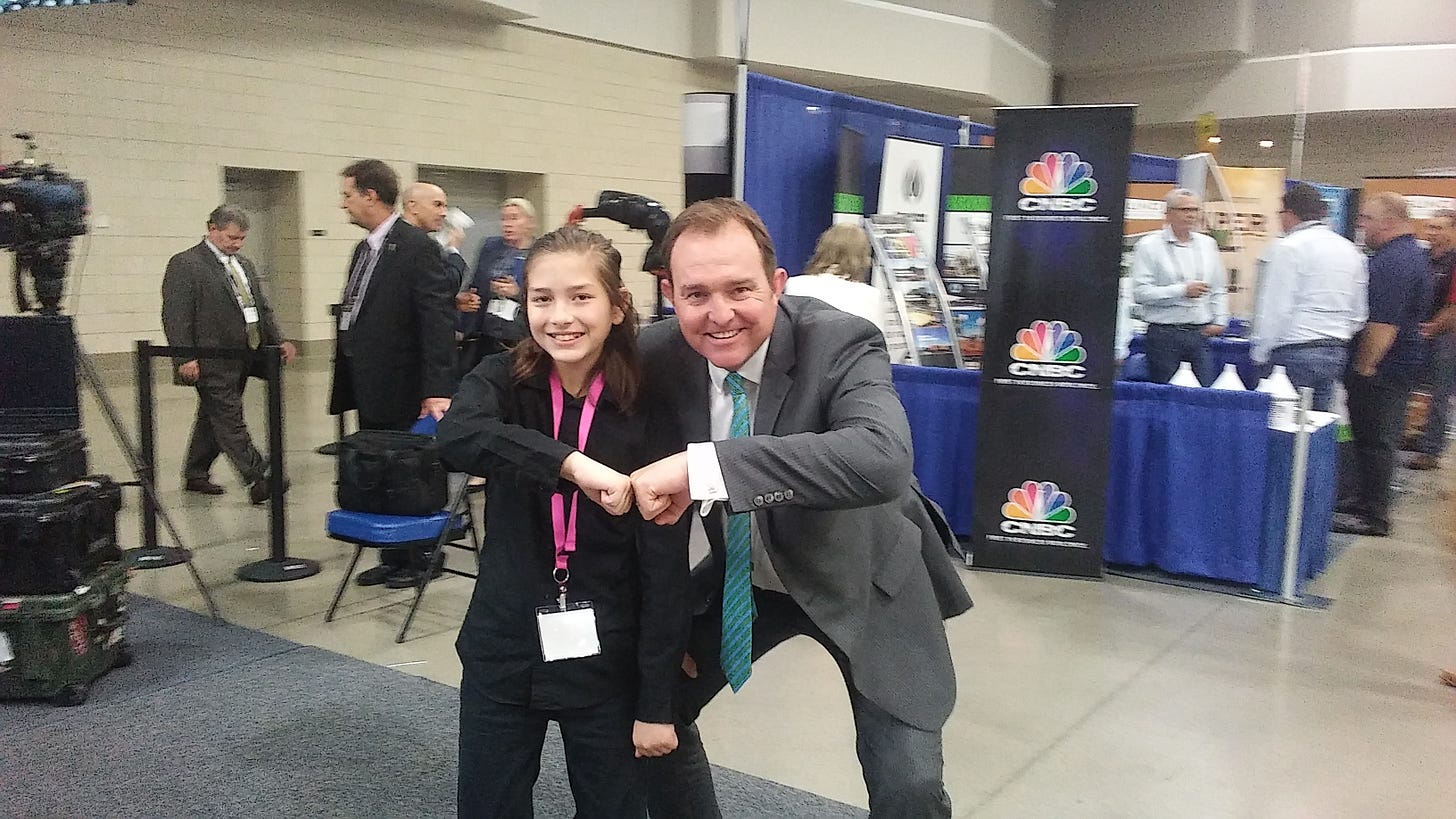
Brian Sullivan
Yeah, it was, I can’t remember what the name of it was. No. Listen, you’re right. I mean, the price of oil had come down dramatically very quickly starting in October. So that’s why we wanted to go, what’s going to happen here. Listen, it’s not a complicated story globally or in North Dakota or it doesn’t matter where you are just look at the production numbers versus demand numbers and you see that the world has too much oil and hard to believe we came from peak oil a few, you know,
decades ago to now too much oil. But we went there to kind of see where the follow up was. Things were still humming along because the price of oil has only been down for a couple of months and everybody was fully committed. Contracts were in drilling activity was high. We sat down, had dinner with a bunch of locals and various businesses. And, you know, they were all of course, very optimistic, you know, as you would imagine that entrepreneurs are going to be, I mean, to be an
entrepreneur, I think you have to be an optimistic person. Uh But, but it was also a sort of a sense of, I mean, it’s just some respect because we met some nice people up there. Everyone was kind of like we’re gonna be fine, everything’s fine, it’s gonna recover oil bounce back. I wasn’t quite so sure. I mean, you know, I’m just a journalist but you look at the numbers and you’re thinking there’s a lot of gap there to make up in terms of oversupply.
Things are still, things are still expensive. Hotels still in the 300 buck range um restaurants, there’s a couple of nice places there. We’ve done, we’ve been to this place called the Williston Brewing Company, kind of the nicest restaurant in town all three times. I met the owner had him on the show and he’s a very successful entrepreneur by the way in Minneapolis and other places. But you know, we went there and the menus were expensive and the restaurants were crowded and um I
mean, they were still humming along because because the price had just come down and there was a great expectation that it was going to recover very quickly. I also do remember that it was -20. I never been so cold in my life. I grew up in southern California. Um, it was negative 20 and obviously it hasn’t happened. And so we paid a visit to him, uh, last week to kind of figure out, you know, the third stage.
Jason Spiess
Ok. So last week you, you went back to the Bakken and you did? Ok. So let’s, let’s same question. Uh, now you’re back to the, uh, dirt roads. $300 400 dollar a night, Rama. What, what, what was the new normal? Because I’m actually doing a story. Oh, hang on one second.
I’m, I’m 29. I’m sorry, one second here. Um I, I’m actually doing a story called uh The New Normal is what we’re calling it right now. Uh talking about some of these new communities. So I guess, yeah, I mean, what was the new normal? Uh, 100 and 29 you were saying?
Brian Sullivan
Yeah, I paid 129 a night for, for the hotel that was in the 300 the last time I was there. Here’s the weird irony that, and this isn’t even me saying this, this is the restaurant owner from the brewing company and others who live there, which is the last two times I was there. There wasn’t enough of anything, there wasn’t enough hotel rooms, there wasn’t enough restaurants, there wasn’t enough cranes for the oil rig, there wasn’t enough anything.
Now there’s suddenly too much of everything and there’s too many hotel rooms, there’s too many restaurants. There’s something like 33 restaurants now in Williston, North Dakota, that’s what this restaurant owner was telling us. Marcus Johnson’s name J UN D T. And there’s, you know, and new hotel is opening up. So there’s a glut of rooms.
There’s a glut of hotels. We met a guy the first time we were there. Really nice guy named Andy, uh in J OS who owns Dakota West Crane Company and they started with one crane, him and his cousin And they went down to Houston and drove this crane back, took him like a week and a half to drive this Crum and a crane. You know, I’m talking about these giant cranes, you know, with like, you know, 20 tires and stuff like that.
They go 50 mph back And they got up to nine cranes. And in fact, he went out to Columbia, South Carolina and drove a crane back, um, 45 mph from Columbia, South Carolina to to Williston took him 16 days a gate because he had to stop and get permitted and nothing was slow and gas problem. And now he’s down to four. So he went from 1 to 9 to four in the course of three years.
And, you know, and he’s, and he’s had to lay people off and they’re, they’re small business, a family business. They’re struggling to sort of, you know, keep things going. Um, so we went from, from not enough of anything to, too much of everything. And here’s the, here’s the sad reality of that type of world. If everybody Jason is half full, they’re all don’t. So, what’s gonna have to have happened is either we’re gonna see a recovery and we’re gonna see the rooms get filled back up
and the restaurants get filled back up and the apartments get filled back up, or There’s gonna be a lot of closing stuff down because you, you need to have businesses 75% full to really, to really stay in business. I don’t care what you are right.
Jason Spiess
You know, you, you, you bring up a very interesting point. I was just talking with uh a real estate uh commercial broker out of Minneapolis yesterday and he represents a number of firms out in the bakken. And what he was talking about was the drop in rents from 3000 down to 1000 to 1500. But not only do you have a drop in rents but you have a drop in occupancies. So actually your 75% projection is really more of a 25% projection.
And that if you don’t start to see some heads in the beds, you’re gonna start seeing some bankruptcies and possibly some uh you know, you know, some properties that are gonna be for sale because a lot of these people who own the buildings, they didn’t intend to be landlords. Did you see anything along those lines or hear any of those numbers, like I just said.
Brian Sullivan
Yeah. Well, listen, there’s a gigantic private equity firm called Colberg Kravis and Roberts. I don’t know if you’ve ever heard of them? They’re colloquially referred to as K K R. They’re one of the biggest, most established private equity firms in the world. The, the, the, the book and movie Barbarians, the geek was about their takeover, Nabisco.
I mean, they’re a legend, you know, I mean, they’ve been around forever. They built a giant apartment community in Williston. I mean, for them to go to Williston, North Dakota, that number one says something, right? And this is a firm that does $20 billion deal. They went to Williston built a giant apartment community and uh we wouldn’t buy it, you know, listen again anecdotally.
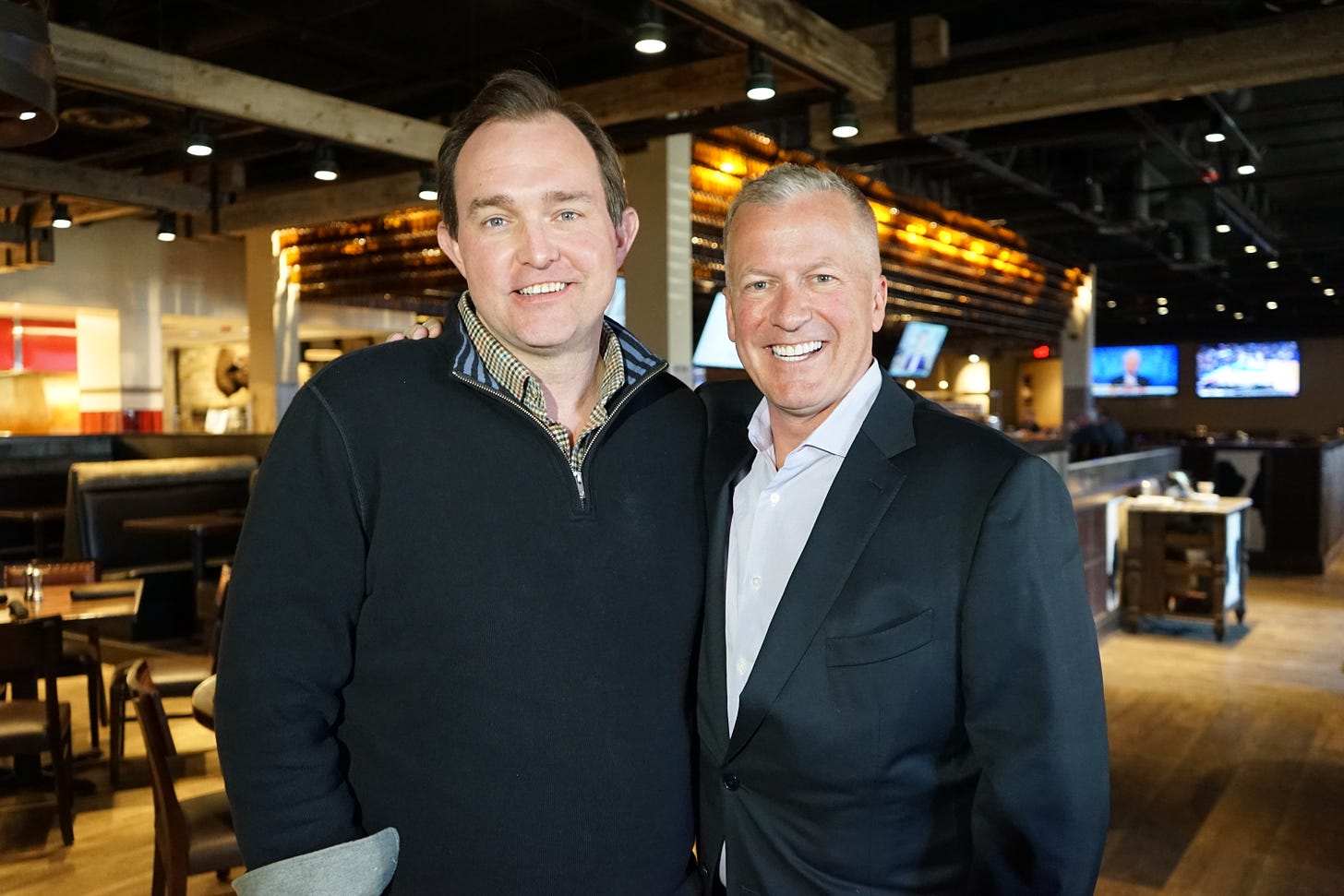
So don’t quote me on this. You know, you can dig in the numbers yourself anecdotally didn’t look back to as many people there. And the guy we were with, who lived there, who’s a land developer like they’re getting killed and, and I think that they might have even left or sold off. You might want to do some research into that on your own. But the point is a giant New York private equity firm goes there and getting its real estate, you know, you know what handed to it.
The other thing too is that if you’ve got everything said empty or partially empty, it’s not good for crime. I mean, it’s not good for anything. Right. I mean, there’s, it looks, things get, things start to look run down again. The city, the people up there are wonderful. We made some good friends and Williston is going to be fine. Long term.
I want to make that point clear. I mean, Williston will continue to go on but they, they went through this huge building boom and you’re right. I mean, things have got to physically shut down. I mean, there’s, you can’t have that many restaurants in a town like that. I mean, you can’t have a half full restaurant. You, nobody will make it. Everyone will just kind of bleed along.
So there’s gonna have to be, uh, either a recovery and here’s the other thing too and, you know, you would know more about, I do, gosh, I’m not an oil and gas guy, by the way, I’m just a TV anchor who likes oil and gas and I’ve been covering it for a while. Is that even if the price of oil recovers to $100 tomorrow? I mean, are they gonna be able to get the people back If people have left, they found other jobs, you know, or they didn’t and maybe they’re, they’re less
willing to come back to Williston because they got, you know, they’ve lost 15,000 people in the county in the, in the course of a year. I mean, could they even get the rates back up.
Jason Spiess
Uh, you know, actually, that, that’s about a 12 to 16th month lag time. I did a story on that and I asked that specific question and it was, if oil prices went up to say $100 tomorrow, what would we, what would we look at for when the rigs would be back? And they said they would be about a 12 to 16 month, uh, time window. And that, that really resonated with me because what you’re saying is right that um some of these places, they got to take a look at their long term projections here and to say,
where are we at today? Because it might not be another year or year and a half until we actually can start seeing some projections that come near. What the originals were. How much money do we want to continue to shovel in this or do we want to cut our losses and move on? Um I wanted to ask you about some of the other shale plays as well. Uh You’re visiting some of these other shale plays. Uh What are you seeing in comparison to the activity when it comes to the Bakken? …
Brian Sullivan
Well, the activity is down everywhere, but I will say this, the permian base. Is that what you’re referring to the other physical place? Uh Yes. Yeah. The Permian is, is, is probably doing the best of all of them. Um And again, everybody’s hurting at this price point. But uh the Permian is the oldest play. Um I think the Texas operators kind of, uh some of them anyway, uh the diamond back is the pioneer, natural resources of the world.
They saw it coming, they started cutting costs early. Um And, you know, they can be, they can be profitable. Uh Some of these companies have told me that they’re profitable under $20 a barrel. And I mean, not much, but they are, in other words, they can, they, you know, they can continue to grow and to, you know, not maybe to expand but yet to survive without a problem.
Eagle Ford is a little more difficult. You know, it comes up in price and listen, you get these weird things that come out of Pennsylvania and stuff that’s more like North Dakota where it’s newer, it’s a more expensive land and, you know, you probably need A $60 number. I mean, again, you would know more beside you. But if you talk to oil companies as I have, I mean, first off, they’re very reluctant to tell you, you know, where they’re profitable.
No, I’m gonna say like it’s $62.50. You know, just that rarely happens if ever. But you know what you hear from, from people up there is I asked the guy at work in a rig, I mean, you know, and he’s a manager of one of the 33 remaining drilling rigs up there. He said 65 is a nice number. I pressed him on it, you know, 65 is a nice number. But around the country, yeah, 50, 40, you can make money in some places.
But if, if you’re a late bloomer to this game, no matter where you are and you paid a lot of money for land and mineral rights cruises And didn’t manage your balance sheet. Well, you’re in trouble and I’ve said on my show that 40 is not much better than 30 for a lot of these companies. It’s, they’re, they’re losing less money, but they’re still losing money.
Jason Spiess
So look, look, look at this from the big, a
Brian Sullivan
big play, by the way, you had a big, sorry to interrupt. You had a big play today. The former $14 billion company called Lin Energy L I N N $14 billion company three years ago based today came out and said, we don’t know if we can continue to exist. Wow, They use the term going concern. That’s, you probably know that’s the business concern. We are question something like we are questioning our ability to continue as a going concern.
That’s accounting term. Basically saying not sure we can pay the bills. They deferred a debt payment. This was a $14 billion dollar company three years ago and that’s why I got involved in this story. It’s not just that I enjoy oil and gas, that the debt levels, the debt angle to the story is the one that, that has not been told or was really understood a couple of years ago.
And that’s why this is different than previous booms and busts because of the amount of debt that was taken on by companies and individuals. I mean, look at the State of North Dakota, you got a billion dollar budget shortfall. How is that possible? Didn’t, did they save anything? No. …
Jason Spiess
So um one of the reasons I got interested in this story, um which is known as the Shale Play was, was because of the change that something felt different. Much like how you gravitated to it because this, this play does seem different. And when I heard uh John Gibson, the former uh CEO of One Oak tell me who I’ve interviewed and he told me that there writing their business plan.
So did Harold Hamm um James Volcker from Whiting, alluded to the same thing when I started hearing these men of that caliber, tell me they’re rewriting their business plan. The first thing I thought of in all honesty was my industry, the media. I’ve been in the media now for 2025 years is, and when the internet came around, I had to literally rewrite my whole business plan multiple, multiple times because you know, nobody would pay for it. And then how do you get them to pay for it?
And yada yada yada and then you started seeing uh the Los Angeles Times go out of business because, you know, after 100 years of being a successful company, the internet put them out of business. So, to me that’s what the shale revolution kind of reminded me of. Is this, this technology wave that is changing oil and gas to the tune to where the deepest pockets are gonna win. And, and I don’t know, I, I guess, uh, do you got any comments on that? I guess?
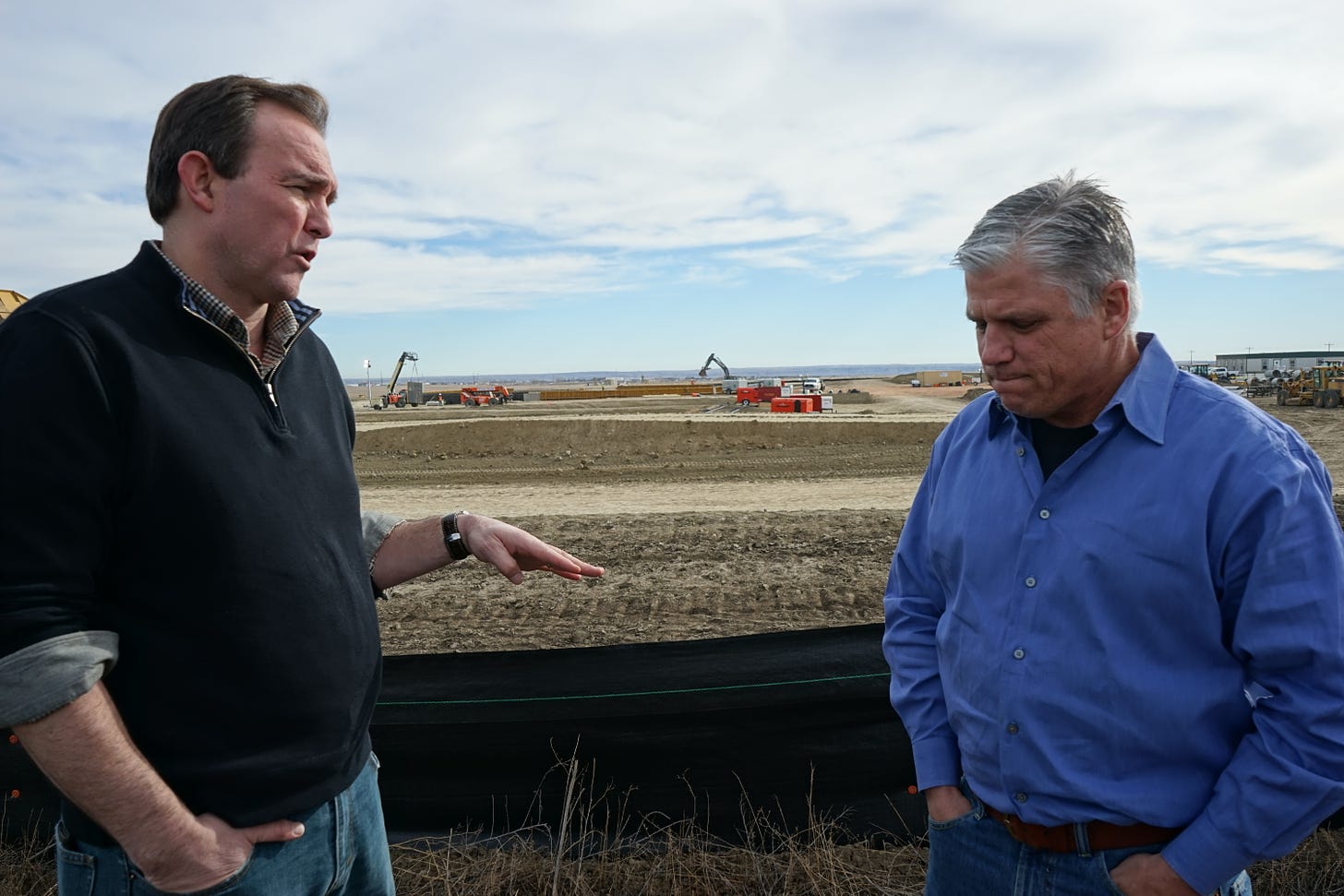
Brian Sullivan
Well, you know, I like the analogy actually. Um, I hadn’t thought of it before so I think it’s pretty, pretty good. I guess the idea would be this, I mean, it’s kind of like deerpoint media now. Print or TV doesn’t really matter. I mean, print ad rates can come down a lot more than, than I think, broadcast. But the point is the same is that the whole industry has changed and I, and I feel like, like with the oil producers, it’s kind of like, well, it’s just a matter of time before oil
recovers and goes higher again and, and it’s kind of like us saying, well, it’s just a matter of time before ad rates go higher again. What if they don’t, what if they don’t? And you have to operate your company like that and if they do great, if they don’t, then you’re prepared but you can’t assume price, you’re gonna go high. You know, it, I think we have, you know, recent bias because oil has been above 100 a barrel twice in the last five or six years.
If you go back 40 or 50 years and inflation at just the price of oil is like $40.45 bucks. I mean, that’s where oil wants to be. For the nineties. Oil did nothing. Right. I mean, and so for, for most of the 90s and so it’s, it’s entirely possible that just because oil has collapsed as much as it has that it’s not going to recover it, it may not. What if it doesn’t?
And I think if you’re running a company, you have to have, you know, you have to have a budget and, and an operating plan that says, what if oil is 40 to $45 for the next five years, how does the X Y Z corporation get through that? And that’s what you have to do. And the good news, I guess is that People are going to learn to operate a lot smarter and that, you know, if they can operate at 40 to 45 that if we see a turn, you know, that until labor rates go back up, that they’re going to be able to make
some money and possibly grow. So, but if they don’t be darn well, better be able to have your balance sheet in order. And if you took on a lot of debt and can’t renegotiate your debt or issue new equity or whatever it is, you’re in trouble. That’s why I said 40, I would go and 30 for some of the companies. … Uh
Jason Spiess
How are you doing on time? You got time for one or two more? Ok. Uh I wanted to ask you about the reverse ripple. Um, I, I, I did a story called the Bach and Ripple and explained how, you know, miles city and buildings and Rapid City and Minneapolis were really early um successors because of the distribution arteries that were set up. And just some of the, you know, three M out of Minneapolis made everything just so natural for the Bakken. They, they were an early victor in the, in the
success of the Bakken. Um Now there’s a reverse ripple that’s coming through. Um when it comes to the jobs that have been created and now the jobs that are being eliminated because of this volatility of price. Ok. That’s kind of the context behind it. So what, what, what do you see or do you get any comments when it comes to the reverse ripple? That oil and gas provides the job market or the American economy?
Brian Sullivan
Well, ok, so I’ve been very vocal in saying about about a year and a half ago, I came out and tweeted and said on the other, I thought the oils dropped of this magnitude was bad for the economy. And people were saying I was an idiot because you know, that’s low gas prices, low gas prices are good. Yes, low gas prices are good. But when you look at all the jobs that have been created in this industry over the last five or six years, keep in mind this was the only industry adding jobs during the
financial crisis. If you had a high school diploma and wanted a job and you were willing to bust your butt and freeze, freeze it off as well. You got in a car and went to Williston from wherever you were. You could make a good living if you worked hard for it. And that during the financial crisis, this was the industry that was growing. We’re talking tens or hundreds of thousands of good jobs.
And that’s why I’ve said that I don’t think that it’s a positive for America just because we have cheap gas. People aren’t going to buy a home because gas is cheap, right? They may change the car, they’re driving and drive more miles and maybe order an extra dessert at work. I’m not saying it doesn’t matter, it does. But also the hundreds of thousands of jobs that are going to be either lost or have their pay slashed does have a negative effect as well.
If you look at the national data, Texas and North Dakota had an outsized impact on the data in America when you say, oh things and that’s important psychologically, right? And if you look so the reverse ripple to your effect is this if you look at the data now. Ok, like we had retail sales data, but if you dug into it, you saw that gas stations were the only one really that was down big.
And that’s because it’s based on dollars and if gas is cheap because they bring in fewer dollars on an absolute basis. So it’s, now, it’s, now when you look at the monthly jobs numbers, what’s the only industry that’s losing jobs, mining? Which by the way is that the US government puts oil and gas under mining. So now, now it’s not going to bring America down. That’s not what I’m saying, but it does make the data look weaker and the data does reinforce psychology.
So if we’ve got this thing, sort of, it’s like if you had a B A B and then ad on your, you know, your grade point average is gonna come down even though you’re really an A and B student, you might have ac average all of a sudden and that’s kind of what oil and gas is doing right now, dragging things down, making things not look as good and, and, and it matters a lot
Jason Spiess
you mentioned about the uh some of the efficiencies in technology earlier, bringing some of the cost down and that sort of thing I wanted to ask you, are you seeing any um new companies emerging? Wow,
Brian Sullivan
that’s a good question. I can’t think of one off the top of my head, I’m sure there’s a lot of seismic type testing companies that matter. A lot, you know, that are coming out of the, you know, to your point, the technology has gotten so gone good. It’s like fishing. You know, you’re going to catch a fish though. Every time you put the hook in. It’s just how big the fish is going to be and how hard it’s going to be to reel it in.
But there’s no, there’s, there’s no empty hooks, there’s no dry holes anymore. I’m sure there’s some seismic companies and doing all kinds of computer aided testing. I haven’t seen them. I’ve got about 100 and 50 stock on this. Um, this, basically this stock screener. I built I track in real time using a program called, uh, and there’s some names that, you know, you look at you like, what do they do?
I probably should dig in a little more. But, um, it’s pretty ugly by the way over the last year. Uh, almost every of the, all of those 150 companies. Stocks are down pretty big. I mean, you look at Houston, I went down to Houston. I ran a stock screen. It was like 200 14 publicly traded companies in the Houston area and 100 and 68 of them were oil and gas related. You know, like it’s, I mean, Houston is a huge city and it’s diversified, but oil and gas will still the blood that pumps through
its veins, right? And I think we’re gonna see this. Not just the Williston story, I think it will. If oil stays low for a year or two, you’re gonna start to see it that those ripples. You talked about housing trucking rail pipes, All the pipe manufacturers. According to the American Petroleum Institute, there’s 300,000 companies that are directly or indirectly involved or benefiting from the oil and gas industry.
Check out these Amazing American Environmental Entrepreneurs! Don’t forget that the promo code OTIS unlocks big big savings!
Submit your Article Ideas to The Crude Life! Email studio@thecrudelife.com
About The Crude Life
Award winning interviewer and broadcast journalist Jason Spiess and Content Correspondents engage with the industry’s best thinkers, writers, politicians, business leaders, scientists, entertainers, community leaders, cafe owners and other newsmakers in one-on-one interviews and round table discussions.
The Crude Life has been broadcasting on radio stations since 2012 and posts all updates and interviews on The Crude Life Social Media Network.
Everyday your story is being told by someone. Who is telling your story? Who are you telling your story to?
#thecrudelife promotes a culture of inclusion and respect through interviews, content creation, live events and partnerships that educate, enrich, and empower people to create a positive social environment for all, regardless of age, race, religion, sexual orientation, or physical or intellectual ability.
Sponsors, Music and Other Show Notes

Studio Sponsor: The Industrial Forest
The Industrial Forest is a network of environmentally minded and socially conscious businesses that are using industrial innovations to build a network of sustainable forests across the United States.
Weekly Sponsor: Stephen Heins, The Practical Environmentalist
Historically, Heins has been a writer on subjects ranging from broadband and the US electricity grid, to environmental, energy and regulatory topics.
Heins is also a vocal advocate of the Internet of Everything, free trade, and global issues affecting the third of our planet that still lives in abject poverty.
Heins is troubled by the Carbon Tax, Cap & Trade, Carbon Offsets and Carbon Credits, because he questions their efficacy in solving the climate problem, are too gamable by rent seekers, and are fraught with unreliable accounting.
Heins worries that climate and other environmental reporting in the US and Europe has become too politicized, ignores the essential role carbon-based energy continues to play in the lives of billions, demonizes the promise and practicality of Nuclear Energy and cheerleads for renewable energy sources that cannot solve the real world problems of scarcity and poverty.
Look at what’s happened to me.
I can’t believe it myself.
Suddenly I’m down at the bottom of the world.
It should have been somebody else
Believe it or not, I’m walking on air.
I never thought I could feel so free-e-e.
Barterin’ away with some wings at the fair
Who could it be?
Believe it or not it’s just me
The Last American Entrepreneur
Click here of The Last American Entrepreneur’s website

Studio Email and Inbox Sponsor: The Carbon Patch Kids
The Carbon Patch Kids are a Content Story Series targeted for Children of All Ages! In the world of the Carbon Patch Kids , all life matters and has a purpose. Even the bugs, slugs, weeds and voles.
The Carbon Patch Kids love adventures and playing together. This interaction often finds them encountering emotional experiences that can leave them confused, scared or even too excited to think clearly!
Often times, with the help of their companions, the Carbon Patch Kids can reach a solution to their struggle. Sometimes the Carbon Patch Kids have to reach down deep inside and believe in their own special gift in order to grow.
The caretakers of Carbon Patch Kids do their best to plant seeds in each of the Carbon Patch Kids so they can approach life’s problems with a non-aggressive, peaceful and neighborly solution.
Carbon Patch Kids live, work and play in The Industrial Forest.
Click here for The CarbonPatchKids’ website

Featured Music: Alma Cook
Click here for Alma Cook’s music website
Click here for Alma Cook’s day job – Cook Compliance Solutions
For guest, band or show topic requests, email studio@thecrudelife.com
Spread the word. Support the industry. Share the energy.

